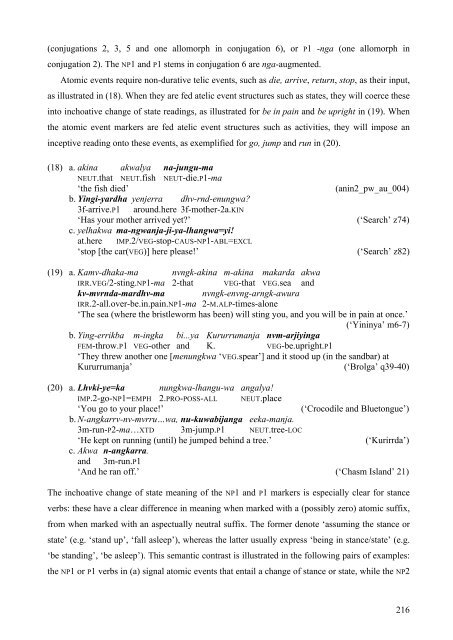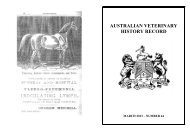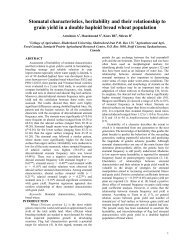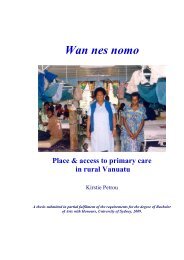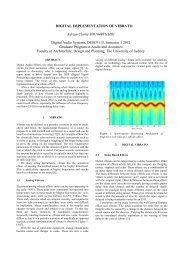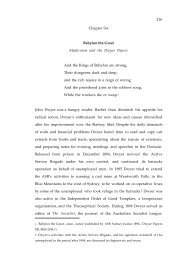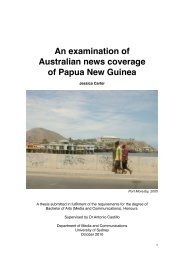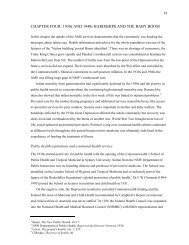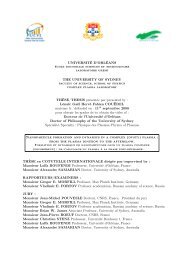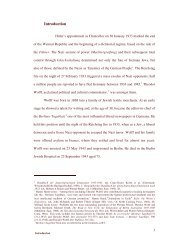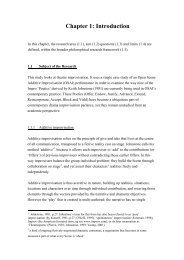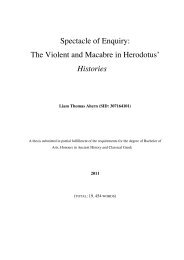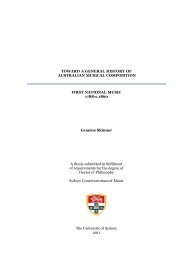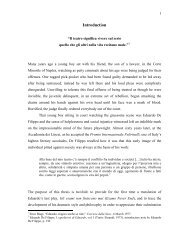Chapter 6: Tense, aspect and mood
Chapter 6: Tense, aspect and mood
Chapter 6: Tense, aspect and mood
Create successful ePaper yourself
Turn your PDF publications into a flip-book with our unique Google optimized e-Paper software.
(conjugations 2, 3, 5 <strong>and</strong> one allomorph in conjugation 6), or P1 -nga (one allomorph in<br />
conjugation 2). The NP1 <strong>and</strong> P1 stems in conjugation 6 are nga-augmented.<br />
Atomic events require non-durative telic events, such as die, arrive, return, stop, as their input,<br />
as illustrated in (18). When they are fed atelic event structures such as states, they will coerce these<br />
into inchoative change of state readings, as illustrated for be in pain <strong>and</strong> be upright in (19). When<br />
the atomic event markers are fed atelic event structures such as activities, they will impose an<br />
inceptive reading onto these events, as exemplified for go, jump <strong>and</strong> run in (20).<br />
(18) a. akina akwalya na-jungu-ma<br />
NEUT.that NEUT.fish NEUT-die.P1-ma<br />
‘the fish died’ (anin2_pw_au_004)<br />
b. Yingi-yardha yenjerra dhv-rnd-enungwa?<br />
3f-arrive.P1 around.here 3f-mother-2a.KIN<br />
‘Has your mother arrived yet?’ (‘Search’ z74)<br />
c. yelhakwa ma-ngwanja-ji-ya-lhangwa=yi!<br />
at.here IMP.2/VEG-stop-CAUS-NP1-ABL=EXCL<br />
‘stop [the car(VEG)] here please!’ (‘Search’ z82)<br />
(19) a. Kamv-dhaka-ma nvngk-akina m-akina makarda akwa<br />
IRR.VEG/2-sting.NP1-ma 2-that VEG-that VEG.sea <strong>and</strong><br />
kv-mvrnda-mardhv-ma nvngk-envng-arngk-awura<br />
IRR.2-all.over-be.in.pain.NP1-ma 2-M.ALP-times-alone<br />
‘The sea (where the bristleworm has been) will sting you, <strong>and</strong> you will be in pain at once.’<br />
(‘Yininya’ m6-7)<br />
b. Ying-errikba m-ingka bi...ya Kururrumanja nvm-arjiyinga<br />
FEM-throw.P1 VEG-other <strong>and</strong> K. VEG-be.upright.P1<br />
‘They threw another one [menungkwa ‘VEG.spear’] <strong>and</strong> it stood up (in the s<strong>and</strong>bar) at<br />
Kururrumanja’ (‘Brolga’ q39-40)<br />
(20) a. Lhvki-ye=ka nungkwa-lhangu-wa angalya!<br />
IMP.2-go-NP1=EMPH 2.PRO-POSS-ALL NEUT.place<br />
‘You go to your place!’ (‘Crocodile <strong>and</strong> Bluetongue’)<br />
b. N-angkarrv-nv-mvrru…wa, nu-kuwabijanga eeka-manja.<br />
3m-run-P2-ma…XTD 3m-jump.P1 NEUT.tree-LOC<br />
‘He kept on running (until) he jumped behind a tree.’ (‘Kurirrda’)<br />
c. Akwa n-angkarra.<br />
<strong>and</strong> 3m-run.P1<br />
‘And he ran off.’ (‘Chasm Isl<strong>and</strong>’ 21)<br />
The inchoative change of state meaning of the NP1 <strong>and</strong> P1 markers is especially clear for stance<br />
verbs: these have a clear difference in meaning when marked with a (possibly zero) atomic suffix,<br />
from when marked with an <strong>aspect</strong>ually neutral suffix. The former denote ‘assuming the stance or<br />
state’ (e.g. ‘st<strong>and</strong> up’, ‘fall asleep’), whereas the latter usually express ‘being in stance/state’ (e.g.<br />
‘be st<strong>and</strong>ing’, ‘be asleep’). This semantic contrast is illustrated in the following pairs of examples:<br />
the NP1 or P1 verbs in (a) signal atomic events that entail a change of stance or state, while the NP2<br />
216


